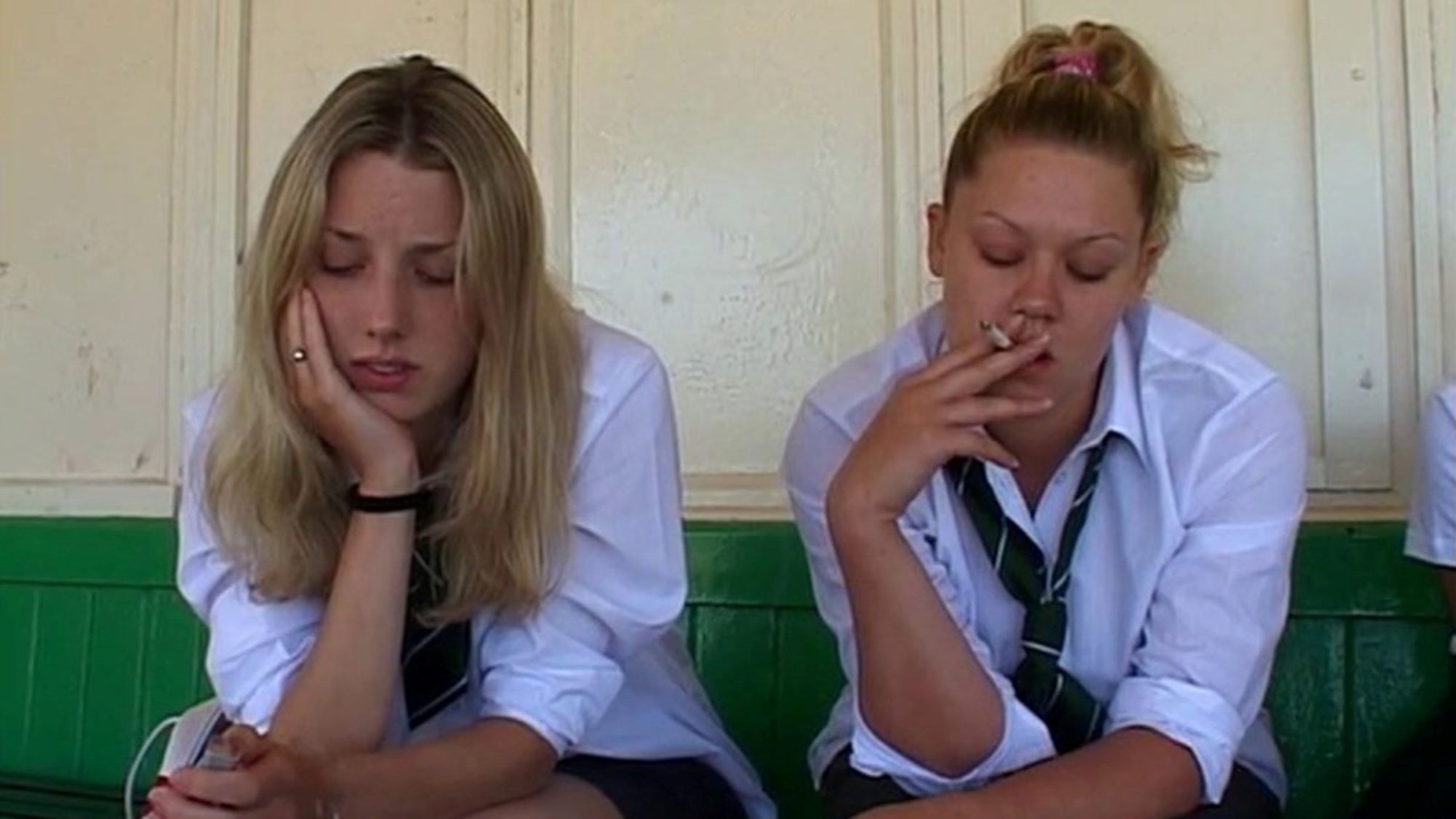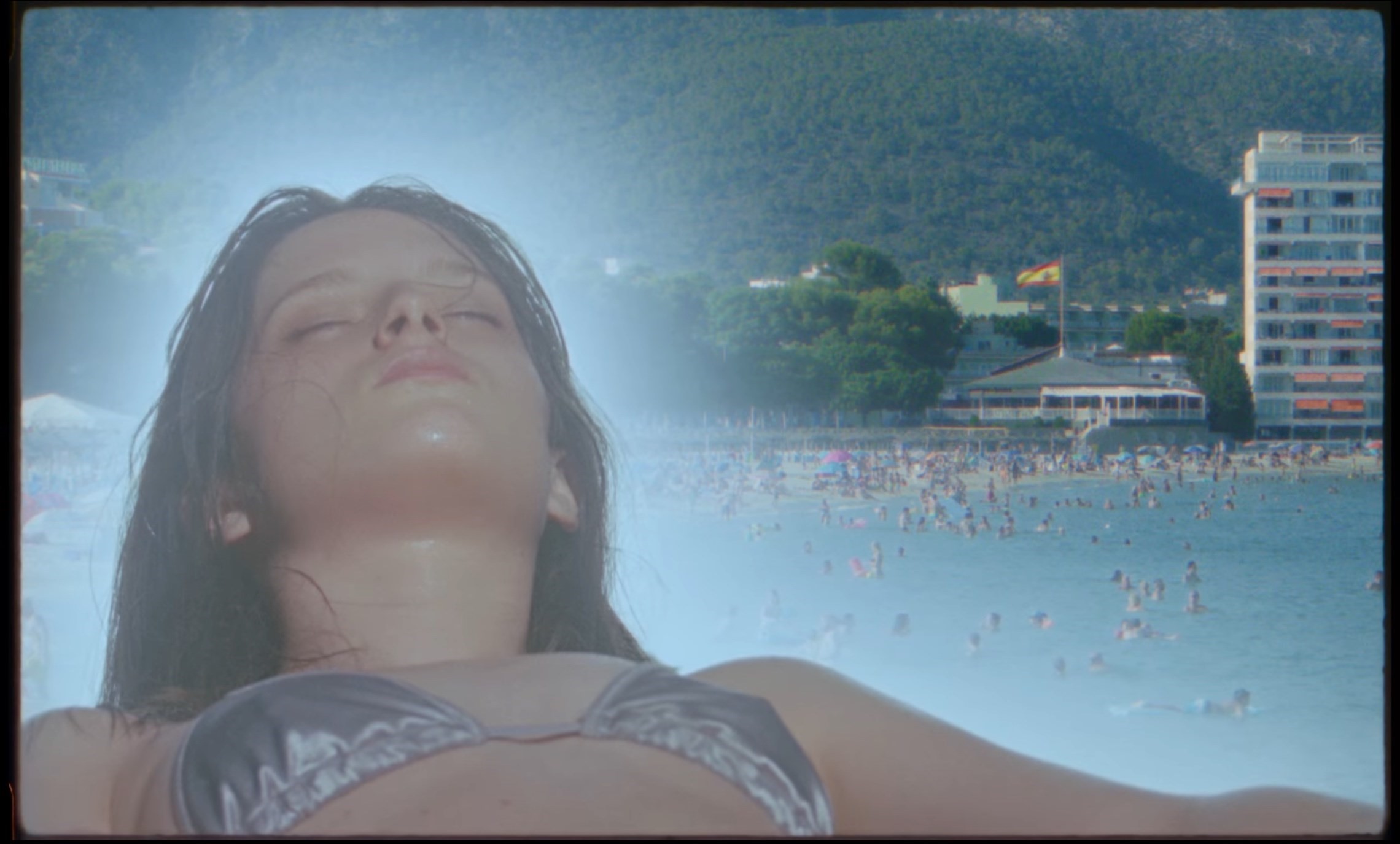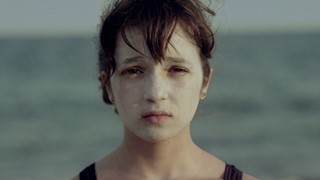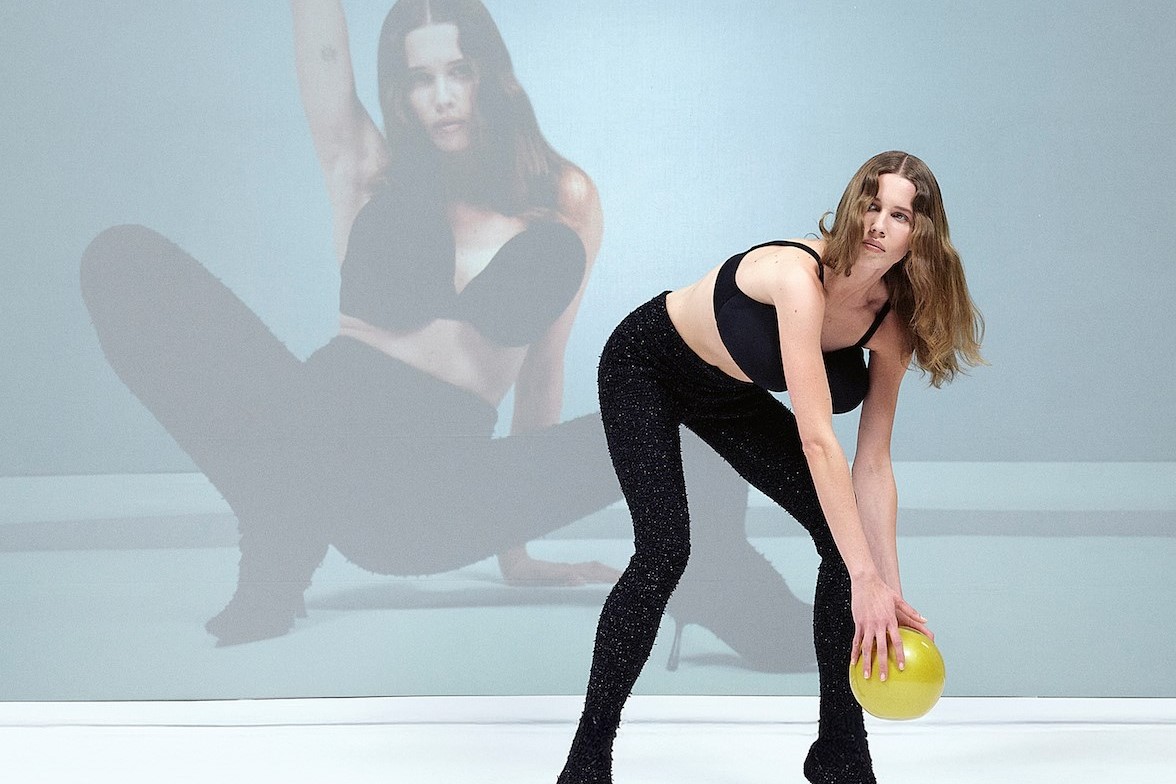There’s something about summer that always brings back the feeling of being a teenager. For the fourth season of Girlhood Studies, Claire Marie Healy examines the close relationship between girlhood and the summertime: as we experience it in our lives, and re-experience it through visual culture. This edition will publish weekly, with one for every week of the school holidays.
Out of all the themes of this season – and all its studies of girlhood – the setting of the beach bears the greatest resemblance to my own. I spent my teenage years in a seaside town famous for its elderly population and deep conservatism (that this stretch is nicknamed the Essex Riviera is both a joke and a reference to the genuine glamour to be found in a former era of holidaymaking). For me, the summer holidays will always intrinsically be linked with the sense-memories of an adolescence spent sea side: harsh wind whipping at the ears, the smell of the fish and chip shop, and the discordant noise of amusement arcades.

That’s why I’m interested in depictions of girls on the beach where the sense of infinite space it can offer is its own kind of circumscription: like being a girl, where the future feels vast but ultimately unreachable and unknowable.
“A lot of people are really derogatory about my work and say it’s just art that something like a teenage girl would make,” Tracey Emin has said of her creative output. “Well, yeah … I’m still stuck in a teenage world, part of me is still there. I’m still dealing with those issues and a lot of people always are.” (I love this quote; it’s stuck to my studio wall.) The setting of the artist’s “lost” feature film Top Spot – which was viewable for a time last year on the terrific resource, Le Cinema Club – has much in common with the scene of my own early years. Set in a pre-gentrification Margate, it is a deliberate riposte to “picture-postcard” visions of girlhood, with its frank depictions of assault and other traumas (as with many summertime coming-of-age tales, you get the sense none of this would be happening if the girls were going to school; it’s the dark side of the long holiday’s freedoms).
The details Top Spot captures so well are those of a 00s girlhood: rainbow shag bands, chipped nail polish, passport photo machines, and overly straightened hair. But I also recognise these as the details of a faded seaside town’s own projections, and how they match with the projections of a teenage girl: like the way arcade games that offer visions of “Dream Castles” or “New York City” are also reflected in the logos of the girls’ clothing of this era. Like the imaginary holidays the Lisbon sisters go on in The Virgin Suicides, the girls in Top Spot are always dreaming of places far away from here, resulting in surreal moments like when one of the girls wanders the Egyptian pyramids looking for a guy who got with her one time.

Evidencing a lack of investment in a new vision to come, the towns of the British coast will always provide a good locale for a sense of stuckness on screen. But another reason the British seaside depresses is, well, it’s not often very sunny. In Christian Avilé’s surreally vivid, 16mm short, Daydreaming So Vividly About Our Spanish Holidays (2022), lonely, grey-washed teenagers travel to warmer Spanish climes in search of the Vitamin D the UK is lacking. The holiday scenes play out like Éric Rohmer after the apocalypse: Pauline at the Beach or The Green Ray, but with the low-stakes fun replaced with pure dread. When teenage girls, red-raw and bloody from the sun, are seen leaning over their hotel balconies crying, it’s not because of some failed romance – it’s actually because the sun they are so desperate for hasn’t risen yet. The nighttime, in Daydreaming so Vividly …, is the teenagers’ reminder of “how there’s dark in all places.”
In Eliza Hittman’s debut feature, It Felt Like Love (2013, watchable here), the differences between shy lead character Lila (Gina Piersanti) and her adventurous best friend Chiara are demarcated in the film’s opening moments: the latter, tanned in a revealing bikini, breaks into a luxury house with her boyfriend; the former, in her demure swimsuit and covered in white sun tan lotion, is like a ghost looking in through the window from the outside. There is something about the way Hittman tenderly captures these girls throughout that seems to flag the vulnerability of their bodies: the director has a wonderful touch for both the resilience and defencelessness of youth. I love Piersanti’s perma-worried facial expression: she’s almost mime-like, especially in that white suncream sheen. The Rockaway Beach setting – city beaches are a Hittman favourite, as in Beach Rats – is muted, a little bleak (concrete never feels far away), which suits the film’s premise of harshness beneath romantic ideals. In the film’s unforgettable leading image, our protagonist – with that unforgettable expression – stands in front of the ocean like a Rineke Dijkstra photograph, awaiting her fate.

“What’s that saying you have? The sun is for everyone, the beach is for those who deserve it,” says one character to another in Brazilian drama City Of God (2002). The first time we see the beach is about a half-hour in, as we jump cut into the protagonists’ adolescence after reliving their childhood memories of the cycles of gang violence, petty crime, love and loss in a then-new 1960s favela of Rio. After the blood and violence, the beach is a full-colour exhale.
One thing about City of God: it’s a story, incredibly-told, about boys. In fact, on my rewatch, I realised that the role the girls – one, Angelica (Alice Braga), in particular – play in the story is interchangeable with the beach itself. That is, for characters like Rocket, our protagonist, the love of a girl offers hope of an escape, but not an actual one (a miniseries set in the present day, City of God: The Fight Rages On, is set to debut on Max in August).

The impact of the beach in City of God is due to its contrast with the claustrophobia of the favela. But what I find interesting about it, too, is that it offers its own kind of dead-end. The most widely seen image of the film (Maya Cade has commented on how much it circulated on Tumblr) speaks to this very theme of the impossibility of the beach’s perfection: a girl kisses a boy’s cheek in a perfect romantic moment. But the idyllic promise of the beach – like a film screengrab – is, if not entirely false, certainly only temporary.



